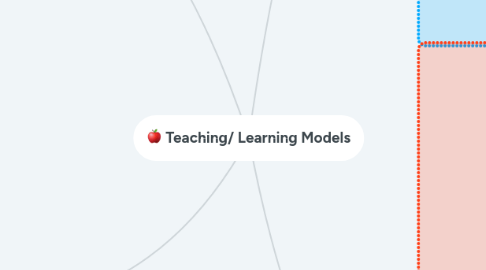
1. Universal Design for Learning (UDL)
1.1. Developed by Rose & Meyer
1.2. Promote Learning & Remove Barriers
1.3. Barrier Free
1.4. Accessible
1.5. Respecting variety of learners without requiring adaptation
1.6. Recognizes various frameworks
1.6.1. Multiple Intelligence
1.6.2. Mel Levine's neurodevelopment constructs
1.7. Application
1.7.1. Goal Setting
1.7.2. Methods & Materials
1.7.3. Assessment
2. Assistive Technology (AT)
2.1. Aid in literacy skills
2.1.1. EX. Magnifying glass to focus in on reading
2.1.2. EX.Enlarge text on tablets
2.1.3. EX. Fold paper & have students follow sentences or highlights as you go on tablet
2.2. Should be considered in every IEP meeting
2.2.1. SETT Framework:
2.2.1.1. Student Environment Tasks Tools
2.2.1.2. What are the student's needs?
2.2.1.3. What is the classroom environment like?
2.2.1.4. Where is the student struggling? EX. Reading
2.2.1.4.1. Tools: Tablet with highlighted words, headphones to listen to story, magnifying glass for reading
2.2.2. Any AT should be requested/considered
2.3. High - Low Tech
2.4. Device or Service
2.5. Seating
2.5.1. Bumpy seats/ Wobbly seats
2.5.1.1. Great for student who struggle with maintaining engagement and staying in seat
2.6. IPADS & Laptops
2.6.1. Used in Art, Science, Math, Reading, etc.
2.6.1.1. READING: EPIC Program
2.6.1.2. Math programs- provide immediate feedback on right/wrong
2.7. Motor Skills
2.7.1. EX. Slanted clipboard
2.7.2. EX. Thicker pencils
3. Understanding by Design (UbD)
3.1. Addresses need for content standards
3.2. What do we teach?
3.3. Founded by Jay McTighe & Grant Wiggins
3.4. STARTS with the END in mind
3.4.1. Backwards Design
3.5. Stages
3.5.1. Identify, Determine & Plan
3.5.1.1. Stage 2: Determine
3.5.1.1.1. Determine Acceptable Evidence
3.5.1.2. Stage 1: Identify Desired Results
3.5.1.2.1. What the student should know by the end of lesson
3.5.1.2.2. What the student should understand by the end of lesson
3.5.1.2.3. What the students should be able to do by the end of lesson
3.5.1.3. Stage 3: Plan
3.5.1.3.1. Plan Learning Experiences & Instruction
3.5.1.3.2. Instruction Activities to meet Desired Results
3.5.1.3.3. ?'s
3.5.1.3.4. Determine how to make the learning process engaging/effective to achieve the desired results
4. Differentiated Instruction (DI)
4.1. how/where students are taught
4.2. focus on best practice for each learner
4.3. Accommodates the diverse needs of the classroom
4.3.1. Languages
4.3.2. Culture
4.3.3. Gender
4.3.4. Economic Disparity
4.3.5. Motivation
4.3.6. Disability
4.3.7. Personal Interests
4.3.8. Learning Styles
4.4. Offers a curriculum design framework
4.5. Founded by Carol Ann Tomlinson
4.6. Philosophy of Teaching & Learning
4.6.1. clear emphasis on learning goals
4.6.2. varied skillful instructional practices and classroom routines
4.6.3. positive and supportive learning environment
4.6.4. individual learning goals
4.6.5. community involvement
4.6.6. differentiated material used in context, process & product
4.7. "responds to needs of all learners"
4.8. Different Models
4.8.1. Integrating technology into classroom environment
4.8.2. Addressing different intelligences
4.8.3. Effective in heterogeneous classroom
